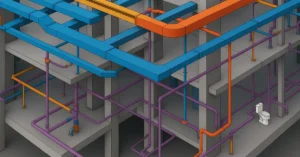Architects Are Turning Into Software Developers for Innovative Design

In the fast-paced world of architecture and design, a remarkable shift is taking place that is redefining the way professionals in this field operate. Building architects are increasingly turning into software developers, and the reasons behind this transformation are multifaceted and intriguing.
Traditionally, architects have been known for their ability to create stunning physical structures, but as technology advances and the world becomes more digitally connected, architects are finding it essential to adapt to these changes. This adaptation is driven by various factors, which we will explore in this blog.
How Architects are Harnessing Software for Success
- Design Complexity:
Modern architectural designs have become increasingly complex. Clients demand intricate and innovative structures that often push the boundaries of conventional architectural practices. Software tools enable architects to create intricate designs, simulate different structural options, and conduct detailed analysis that would be impossible to achieve with traditional methods. - Efficiency and Precision:
Software tools offer architects the ability to work with precision and efficiency. They can create detailed 3D models, perform structural analysis, and generate accurate construction documents. This not only saves time but also reduces the chances of errors in the design and construction process. - Sustainability:
Sustainable design is now a critical aspect of architectural projects. Architects are using software to analyze environmental factors, energy consumption, and material choices to create eco-friendly structures. Software can help in optimizing designs for energy efficiency and reducing the carbon footprint of a building. - Collaboration:
Collaboration in architecture has evolved significantly. Software allows architects to collaborate with other professionals, such as engineers and interior designers, seamlessly. Cloud-based software tools enable real-time collaboration and the sharing of design data, leading to more integrated and efficient projects. - Virtual Reality and Augmented Reality:
Architects are increasingly using virtual reality (VR) and augmented reality (AR) to visualize designs and walk clients through their projects before construction begins. This immersive experience helps clients better understand the design, resulting in more successful projects. - Parametric Design:
Parametric design, a method that uses algorithms to generate complex designs, is gaining popularity. Architects use parametric software to create designs that respond to various parameters such as site conditions, materials, and user preferences, enabling them to explore innovative possibilities. - Data-Driven Decision Making:
Architecture has become data-driven. Architects use software to collect and analyze data on building performance, user behavior, and energy consumption. This information helps in making informed decisions about design modifications and improvements. - Building Information Modeling (BIM):
BIM has revolutionized the way architectural projects are managed. It allows architects to create digital representations of a building’s physical and functional characteristics. BIM software enhances collaboration, reduces conflicts, and improves the overall project management process. - Automation and AI:
Automation and artificial intelligence are being employed to streamline routine tasks in architecture, such as generating floor plans, performing cost estimations, and even creating design concepts based on client preferences. - Customization:
Architectural software tools often allow for high levels of customization. Architects can tailor their software environments to suit their specific needs and workflows, enhancing their creative capabilities.
Conclusion
In conclusion, the transformation of architects into software developers is not just a trend; it’s a necessity in the rapidly evolving world of architecture. Architects are leveraging software tools to tackle the increasing complexity of design, improve efficiency, promote sustainability, and enhance collaboration. With the integration of technology, architecture is not just about building structures but about creating innovative, sustainable, and functional spaces that meet the demands of the modern world. This evolution is reshaping the profession and ensuring that architects remain at the forefront of design and innovation.
If you’re interested in learning more about architecture firms in Europe, check out this comprehensive list of the top 50 firms compiled by Archgyan. From innovative startups to long-established industry leaders, this list has it all. Take a look and discover some of the most inspiring and influential architecture firms in Europe today.
If you’re interested in architecture and want to learn more about this amazing field, subscribe to our podcast on youtube
For more SketchUp tutorials, head to https://www.sketchupguru.com










